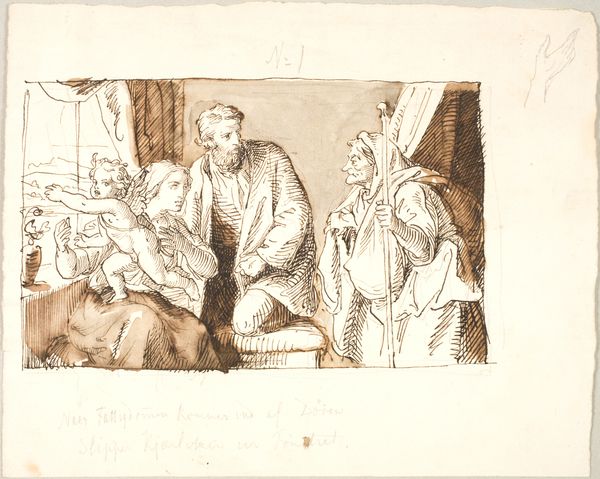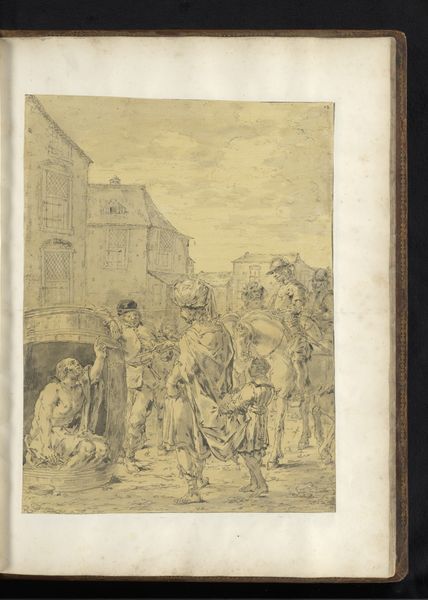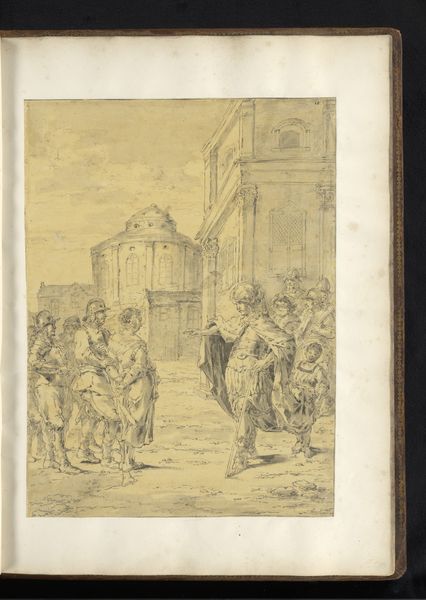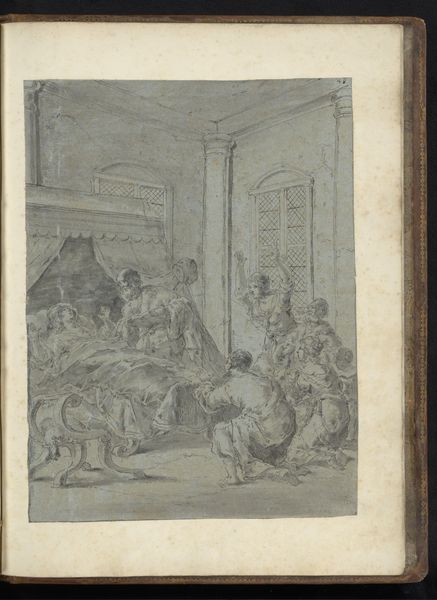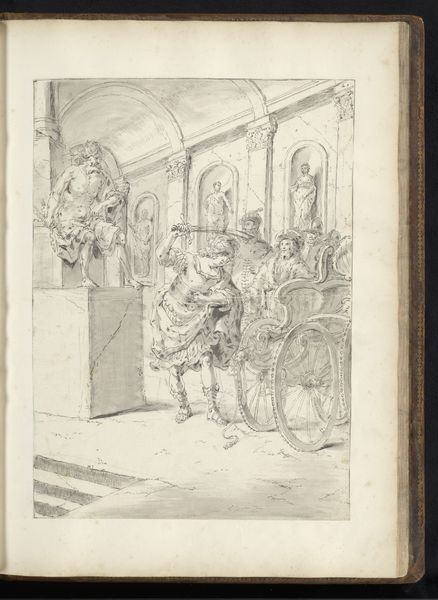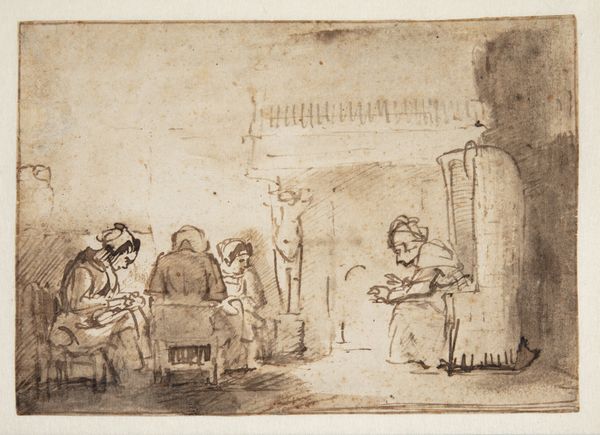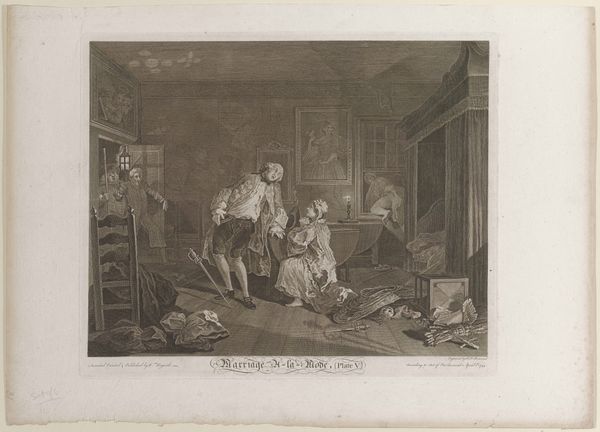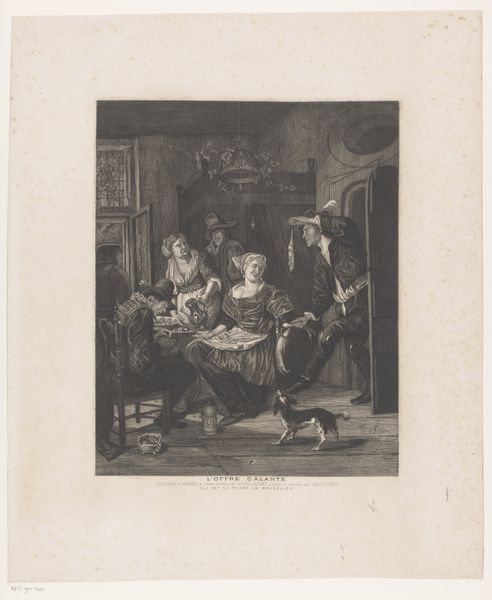
Leonnatus troost de vrouwen die rouwen om Darius III c. 1655 - 1665
0:00
0:00
leonaertbramer
Rijksmuseum
Dimensions: height 408 mm, width 300 mm
Copyright: Rijks Museum: Open Domain
Curator: The quiet solemnity in this pen and wash drawing by Leonaert Bramer immediately strikes me. We’re looking at “Leonnatus troost de vrouwen die rouwen om Darius III”, made around 1655-1665, now housed in the Rijksmuseum. Editor: It feels so subdued for such a dramatic subject, doesn’t it? Just the monochrome wash, very minimal, almost a study. I wonder about the choices of the artist. Why so little fanfare for such a significant historical moment? Curator: It does invite a lot of questions, particularly regarding Bramer's process. Think about the labor that went into even this seeming 'simple' drawing, from preparing the paper to mixing the ink. This was, after all, an object meant to be consumed, circulated among collectors, studied. Editor: That's an interesting point. Its relative modesty in production does perhaps invite wider consumption within a specific artistic and educated group, beyond the truly wealthy. The depicted scene is inherently political, though, showing Leonnatus comforting the women mourning Darius; there’s inherent power in who is represented and how, especially related to foreign rulers. It raises questions around Dutch society and its understanding of historical conflicts. Curator: Absolutely. And notice how Bramer directs our eye not through grand gestures, but through the arrangement of figures and the play of light and shadow. The materials used contribute so heavily to its power, despite being humble on their own. I would argue its accessibility through reproduction contributes to its longevity and widespread consumption today. Editor: The drawing also presents Darius's vanquisher as not simply a barbarian or brute, which aligns with how historical narratives can be utilized, shifted and spun. What stories were the Dutch telling themselves about power, conquest, and compassion? It prompts that exact response: looking at the role art plays in the grand theater of politics and power dynamics, a carefully curated production for its time. Curator: Precisely, by tracing the path of this artwork's production, the intention behind it, its reception within that world, it offers a window into a slice of society back then. Editor: Yes, the choice to depict a consoling Leonnatus shapes historical perceptions even now. Curator: Ultimately, whether we analyze the art, the artist or society back then, that impact persists.
Comments
No comments
Be the first to comment and join the conversation on the ultimate creative platform.

